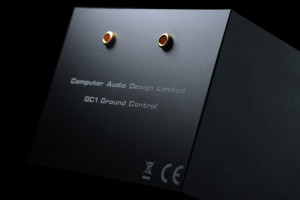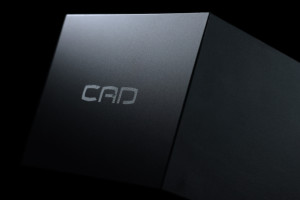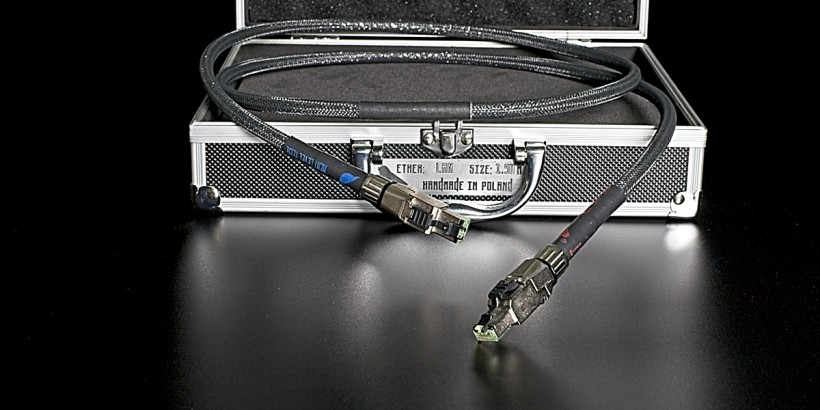It’s not a secret that our precious audio systems are constantly bombarded with noise. The more of it we can banish on as many fronts as possible, the better. This review’s Computer Audio Design GC1 and GC3 Ground Control boxes provide us with additional arsenal in this fight. Enjoy!
Introduction
My first contact with products by Computer Audio Design (aka CAD) happened several years ago in Warsaw, during the local Audio Video Show, back then known simply as the Audio Show. The two people strong CAD team – Scott Berry and Isabel Whitley – exhibited at one of the Golden Tulip hotel’s largest rooms together with Sven Boenicke of Boenicke Audio. That’s the place where I was introduced to and then shocked by his W8 floorstanders for the very first time. However, this review’s company played the part in my experience and there’s no better opportunity than now to properly acknowledge this fact.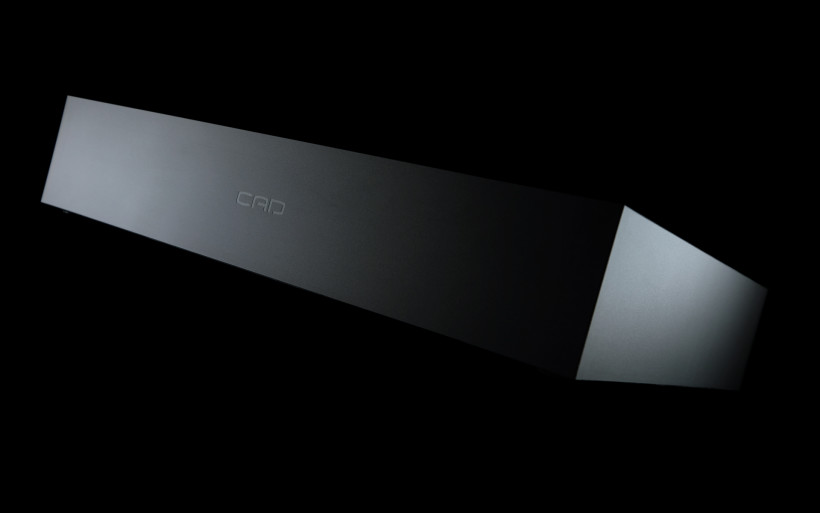 I remember well CAD’s goods showcased in Warsaw several years ago. This company, back then exclusively focused on digital audio hardware, had two fitting products on display; the CAD 1543 DAC and CAD CAT transport/server. Past the brief chat with Isabel and Scott just outside the above-mentioned room, I learnt that their d/a converter’s name wasn’t accidental but associated with multiple vintage Philips TDA1543 R-2R chips found inside the machine, which somewhat introduced me the idea of sound profile its maker’s been after. His devices housed in acrylic enclosures didn’t quite fit the industry meta then and they surely don’t now, most available audio goods are clad in aluminium or steel dresses after all. Nonetheless, the CAD CEO went with thick laser-cut acrylic exterior due to its mechanical and electrical properties and then visuals, not the other way around. No wonder, the man’s previous jobs were in R&D and manufacturing departments at Tektronix and Xerox. He’s a proper engineer in the first place.
I remember well CAD’s goods showcased in Warsaw several years ago. This company, back then exclusively focused on digital audio hardware, had two fitting products on display; the CAD 1543 DAC and CAD CAT transport/server. Past the brief chat with Isabel and Scott just outside the above-mentioned room, I learnt that their d/a converter’s name wasn’t accidental but associated with multiple vintage Philips TDA1543 R-2R chips found inside the machine, which somewhat introduced me the idea of sound profile its maker’s been after. His devices housed in acrylic enclosures didn’t quite fit the industry meta then and they surely don’t now, most available audio goods are clad in aluminium or steel dresses after all. Nonetheless, the CAD CEO went with thick laser-cut acrylic exterior due to its mechanical and electrical properties and then visuals, not the other way around. No wonder, the man’s previous jobs were in R&D and manufacturing departments at Tektronix and Xerox. He’s a proper engineer in the first place.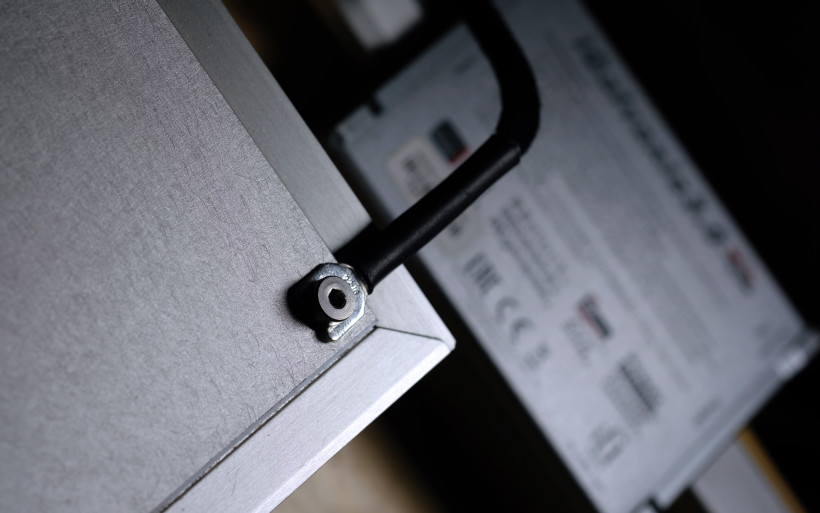 Scott’s unusual design approach and component selection plus that enclosure twist, all struck me as very much non-mainstream, thus naturally intriguing. CAD machines on display in Warsaw I’ve found nicely executed, thoroughly engineered and unique. Since our first meet, I spoke to the team CAD several times, always interested in what’s next in their pipeline. I imagined supportive components along the lines of i.e. a standalone reclocker, perhaps a LAN switch/cable, or a fancy acrylic rack tailored to accommodate this company’s own hardware. Nothing of the sort happened, Scott pursued the far less attended path of ground conditioning instead. Knowing his engineering background, he had to have a firm reason. Upon asking whether I’d be interested in the result of his recent work, there was only one viable answer and that’s how two CAD loaners – GC1 and GC3 Ground Control models – were sent my way.
Scott’s unusual design approach and component selection plus that enclosure twist, all struck me as very much non-mainstream, thus naturally intriguing. CAD machines on display in Warsaw I’ve found nicely executed, thoroughly engineered and unique. Since our first meet, I spoke to the team CAD several times, always interested in what’s next in their pipeline. I imagined supportive components along the lines of i.e. a standalone reclocker, perhaps a LAN switch/cable, or a fancy acrylic rack tailored to accommodate this company’s own hardware. Nothing of the sort happened, Scott pursued the far less attended path of ground conditioning instead. Knowing his engineering background, he had to have a firm reason. Upon asking whether I’d be interested in the result of his recent work, there was only one viable answer and that’s how two CAD loaners – GC1 and GC3 Ground Control models – were sent my way.
Ground Control to Major Hum
CAD’s latest portfolio additions tackle the subject nowhere near as popular as cables, power components or even decouplers. Scarce competition of course is a smart choice from the marketing perspective, however Scott’s awareness of what noise does to our audio setups is of key importance. His knowledge created the need to handle a specific kind of junk, found in the range from 700kHz way up to 10GHz and beyond, thus in the realm way above what our ears can directly intake, but indirectly they can. This HF mess generated via home appliance devices, routers, TVs, battery chargers, light dimmers and alike, propagates to our mains power and earth to then bleed into our audio systems and negatively impact their noise floor, which in effect leads to audible performance decrease.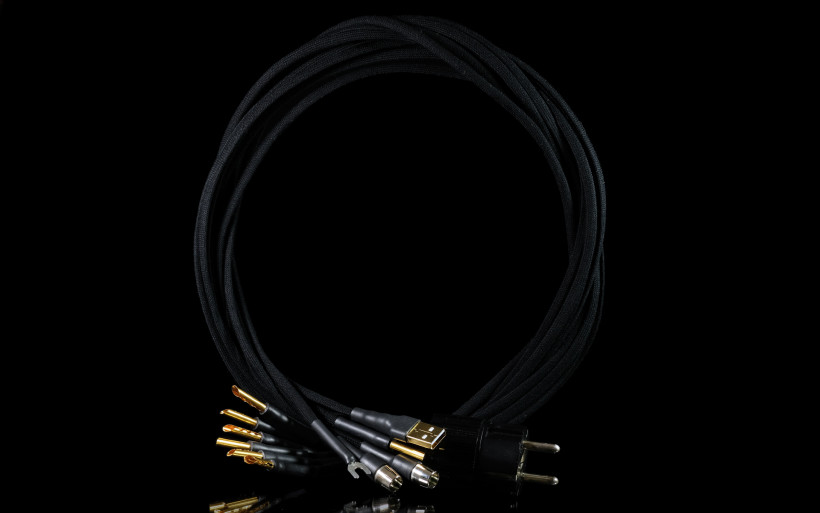 Audio hardware itself isn’t free from noise as well, especially digital transports based on electrically not exactly silent computer internals. CAD CAT’s trademark non-conductive acrylic enclosure, separated SSD drives and many other optimizations already put up a good fight against noise. However, it can be beaten even more efficiently via external measures and here’s where Scott’s Ground Control products step in. These goods are not only tailored to work with CAD’s core devices, but essentially every powered audio item out there.
Audio hardware itself isn’t free from noise as well, especially digital transports based on electrically not exactly silent computer internals. CAD CAT’s trademark non-conductive acrylic enclosure, separated SSD drives and many other optimizations already put up a good fight against noise. However, it can be beaten even more efficiently via external measures and here’s where Scott’s Ground Control products step in. These goods are not only tailored to work with CAD’s core devices, but essentially every powered audio item out there.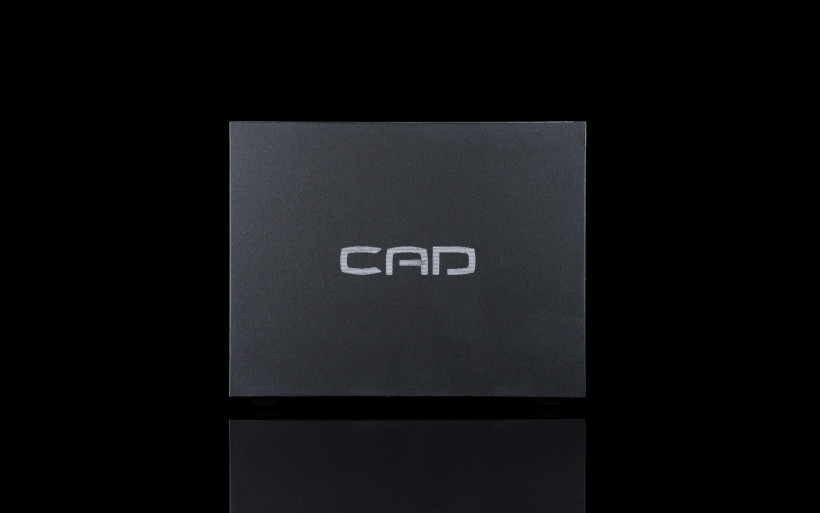 This review’s CAD GC3 Ground Control and GC1 Ground Control models were designed to convert ultrasonic noise located in connected hardware’s signal ground and/or mains earth lines into heat. But these two unusual boxes are passive, hence free from one’s AC power grid. Their job is to connect to any audio device’s free ground point via CAD’s own umbilical cables and then engage noise drainage out of it. Put shortly, the two loaners are black holes for noise; they absorb it but don’t let it out. Today’s acrylic enclosures store multiple layers of proprietary materials made accordingly to Scott’s guidelines. This composite needs several minutes to start the conversion process and the longer this review’s CADs are connected to a product, the more effective they are.
This review’s CAD GC3 Ground Control and GC1 Ground Control models were designed to convert ultrasonic noise located in connected hardware’s signal ground and/or mains earth lines into heat. But these two unusual boxes are passive, hence free from one’s AC power grid. Their job is to connect to any audio device’s free ground point via CAD’s own umbilical cables and then engage noise drainage out of it. Put shortly, the two loaners are black holes for noise; they absorb it but don’t let it out. Today’s acrylic enclosures store multiple layers of proprietary materials made accordingly to Scott’s guidelines. This composite needs several minutes to start the conversion process and the longer this review’s CADs are connected to a product, the more effective they are.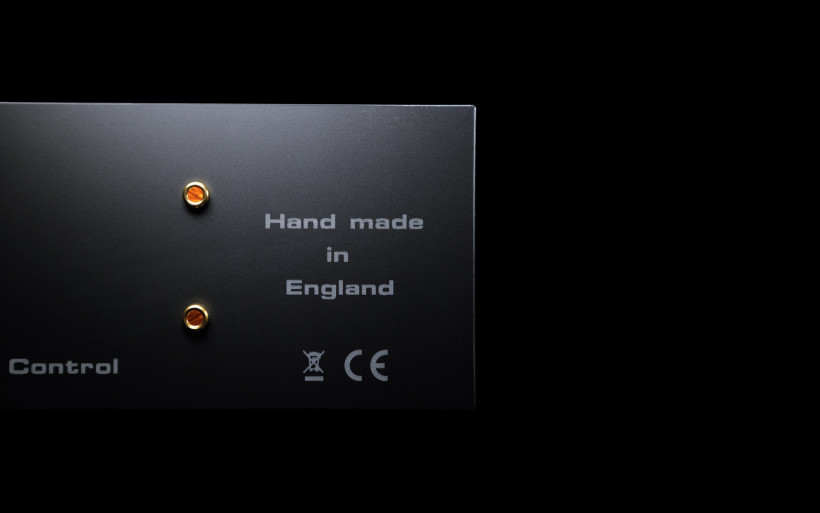 The GC1 and measures (W x D x H) 111 x 322 x 89mm and weighs 4.65kg, whereas the bigger GC3 unit’s respective specs are 458 x 356 x 89mm and 16kg. The former sports two 4.4mm BFA-styled banana inputs on its rear, the latter has six in total. Both are visually utmost simple boxes, decorated only via CAD logos on their fronts and that’s it. No lights, no switches, no fuss. Each Ground Control product sits on four rubber legs, though I’d make these a bit taller. The compact and light GC1 was a breeze to lift and carry around, the GC3 less so yet still manageable. All GC series devices arrive with no umbilicals at all, these have to be ordered separately. There’s a reason for that however, each setup has different termination needs, thus the customer pays only for cables truly necessary. They’re based on solid core conductors and look regular dressed in their cotton sleeves, but their action isn’t ordinary. All Ground Control machines’ fundamental work is to extract high-frequency noise, thus a cable capable of carrying it from a connected device to them has to be of very low impedance, otherwise the point is missed.
The GC1 and measures (W x D x H) 111 x 322 x 89mm and weighs 4.65kg, whereas the bigger GC3 unit’s respective specs are 458 x 356 x 89mm and 16kg. The former sports two 4.4mm BFA-styled banana inputs on its rear, the latter has six in total. Both are visually utmost simple boxes, decorated only via CAD logos on their fronts and that’s it. No lights, no switches, no fuss. Each Ground Control product sits on four rubber legs, though I’d make these a bit taller. The compact and light GC1 was a breeze to lift and carry around, the GC3 less so yet still manageable. All GC series devices arrive with no umbilicals at all, these have to be ordered separately. There’s a reason for that however, each setup has different termination needs, thus the customer pays only for cables truly necessary. They’re based on solid core conductors and look regular dressed in their cotton sleeves, but their action isn’t ordinary. All Ground Control machines’ fundamental work is to extract high-frequency noise, thus a cable capable of carrying it from a connected device to them has to be of very low impedance, otherwise the point is missed.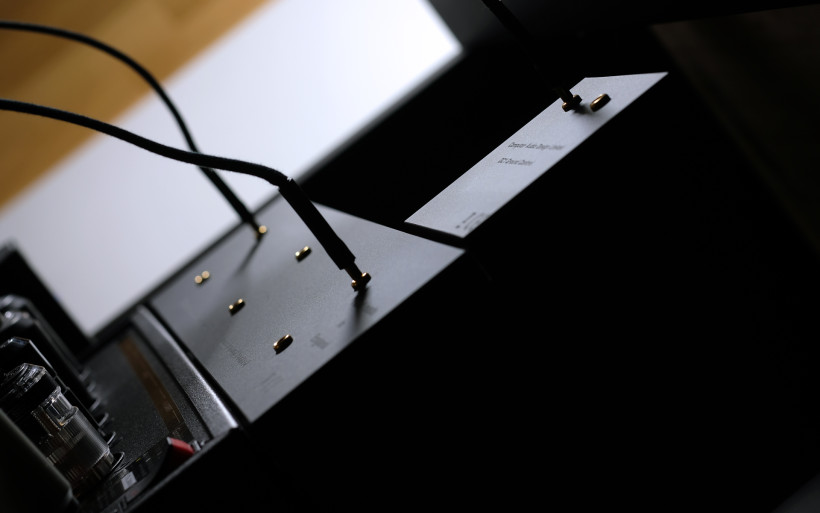 The usage of GC1 and GC3 might look like a self-explanatory breeze and to a degree it is indeed, but it’s good to know where exactly these devices should operate, how two or more interact with each other and what shouldn’t be done with them. Two sockets on the GC1’s rear would imply that two separate products can connect to it at once and that’s factual, it’ll work. However, multiple GC boxes can be daisy-chained to further increase their noise-killing efficiency, plus one CAD per audio component is the most desirable though rather luxurious scenario. These usage plots already introduce multiple routes to follow, the CAD grounding treatment isn’t as trivial as it might seem early on.
The usage of GC1 and GC3 might look like a self-explanatory breeze and to a degree it is indeed, but it’s good to know where exactly these devices should operate, how two or more interact with each other and what shouldn’t be done with them. Two sockets on the GC1’s rear would imply that two separate products can connect to it at once and that’s factual, it’ll work. However, multiple GC boxes can be daisy-chained to further increase their noise-killing efficiency, plus one CAD per audio component is the most desirable though rather luxurious scenario. These usage plots already introduce multiple routes to follow, the CAD grounding treatment isn’t as trivial as it might seem early on. Let’s now add two reference points to the mix; signal ground and mains earth. If an audio device has these separated, then any Ground Control model should connect only to one, but some machines oftentimes have one common ground, i.e. digital transports. This introduces the opportunity to connect i.e. GC1 to such a product and also the mains ground of a power distributor/conditioner at the same time. In this particular scenario such a combination most likely is beneficial, even though in many others it would be the exact opposite. That’s why to know how grounding is sorted in our hardware, is to avoid turning today’s CADs against us.
Let’s now add two reference points to the mix; signal ground and mains earth. If an audio device has these separated, then any Ground Control model should connect only to one, but some machines oftentimes have one common ground, i.e. digital transports. This introduces the opportunity to connect i.e. GC1 to such a product and also the mains ground of a power distributor/conditioner at the same time. In this particular scenario such a combination most likely is beneficial, even though in many others it would be the exact opposite. That’s why to know how grounding is sorted in our hardware, is to avoid turning today’s CADs against us.
Sound
In order to review CAD’s GC1 and GC3 models, fidata HFAS-S10U handled storage and transport duties, then LampizatOr Pacific DAC (KR Audio T-100/Living Voice 300B + KR Audio 5U4G Ltd. Ed.) took over to pass the signal to Trilogy 925, and then to Cube Audio Nenuphar floorstanders with Boenicke S3 speaker cables in-between. All key components were connected via LessLoss C-MARC power cords to the GigaWatt PC-3 SE EVO+ power conditioner, which was then married to the main in-wall outlet via LC-3 EVO cable by the same manufacturer. The Amber-modded Excellence ICs by Audiomica Laboratory linked my DAC and amp.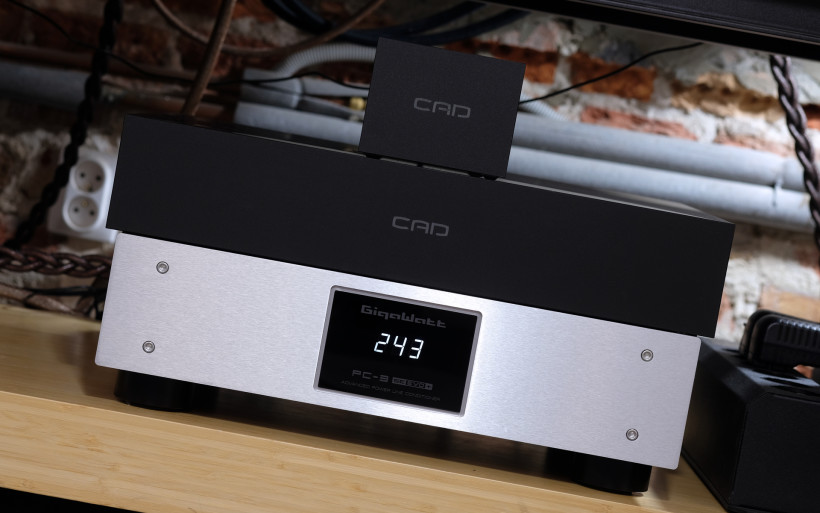 Two different CAD products plus several associated cables enabled multiple triangulations. The goal was to find out which box where exactly was the most efficient. Scott and Isabel provided me with guides of what I should try, but also expressed that with grounding it’s usually a major trial&error game if one is after the best performance possible. I surely was and that’s why a mild homework was in order prior to any critical listening. First of all, grounding plots in all three key components of my setup had to be mapped. My Trilogy 925 and Pacific DAC had their earth separated from signal ground, which is why in their cases CAD boxes had to be always separated from my power conditioner. Worst case scenario I’d make a ground loop. The HFAS-S10 deck on the other hand didn’t sport isolated ground, thus as the only one could be used with either GC1 or GC3 and the GigaWatt at the same time without the risk of counter-productive action.
Two different CAD products plus several associated cables enabled multiple triangulations. The goal was to find out which box where exactly was the most efficient. Scott and Isabel provided me with guides of what I should try, but also expressed that with grounding it’s usually a major trial&error game if one is after the best performance possible. I surely was and that’s why a mild homework was in order prior to any critical listening. First of all, grounding plots in all three key components of my setup had to be mapped. My Trilogy 925 and Pacific DAC had their earth separated from signal ground, which is why in their cases CAD boxes had to be always separated from my power conditioner. Worst case scenario I’d make a ground loop. The HFAS-S10 deck on the other hand didn’t sport isolated ground, thus as the only one could be used with either GC1 or GC3 and the GigaWatt at the same time without the risk of counter-productive action.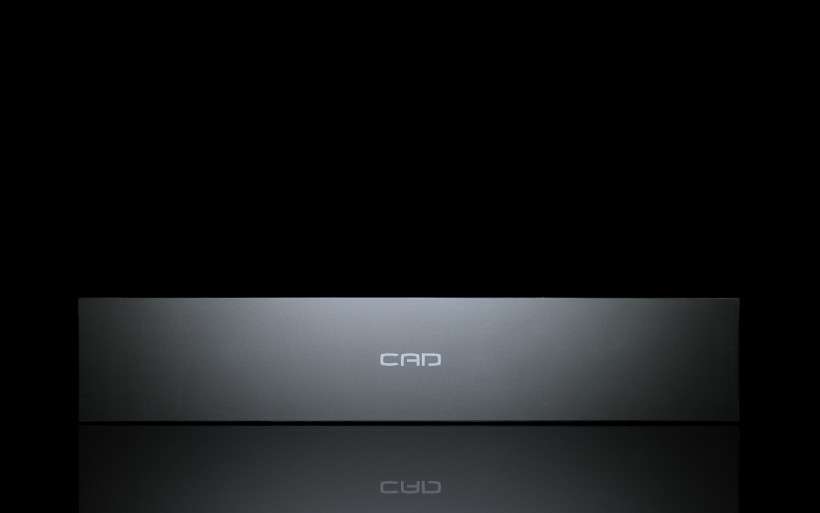 The next subject tackled the best possible connections from CAD devices to my hardware. The Japanese server/storage/streamer had its single USB socket already occupied, thus its enclosure directly connected to either CAD via this operation’s cable finished with a spade, was the only feasible way forward. Nic of Trilogy Sound Systems suggested any of the 925’s unused RCA inputs as good for the job and that’s what I did. The LampizatOr machine was the trickiest. Its grounding socket seemed to be the most obvious option and good indeed, but not the best one. This DAC’s RCA S/PDIF input proved to be audibly a bit better and soon I learnt why; the closer Scott’s boxes were to its main digital board, the easier it was for them to drain high-frequency junk out of it.
The next subject tackled the best possible connections from CAD devices to my hardware. The Japanese server/storage/streamer had its single USB socket already occupied, thus its enclosure directly connected to either CAD via this operation’s cable finished with a spade, was the only feasible way forward. Nic of Trilogy Sound Systems suggested any of the 925’s unused RCA inputs as good for the job and that’s what I did. The LampizatOr machine was the trickiest. Its grounding socket seemed to be the most obvious option and good indeed, but not the best one. This DAC’s RCA S/PDIF input proved to be audibly a bit better and soon I learnt why; the closer Scott’s boxes were to its main digital board, the easier it was for them to drain high-frequency junk out of it.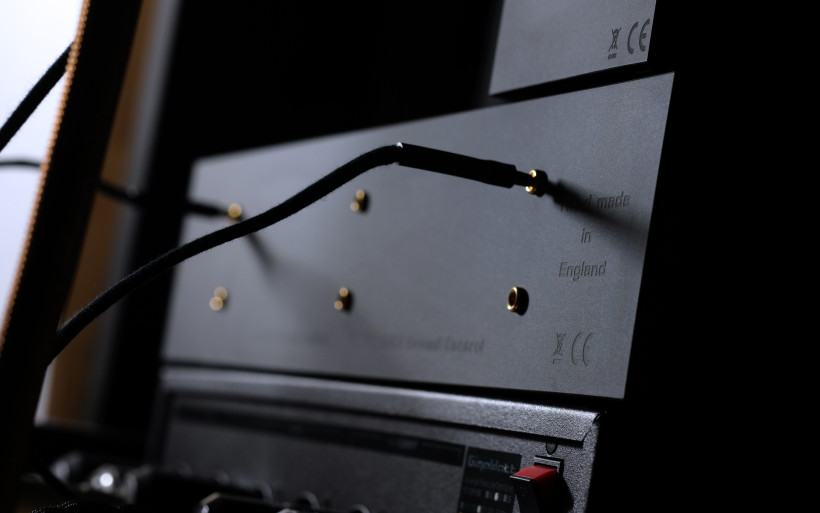 Once everything above was sorted, the most suitable application for both grounding boxes had to be found somehow. All three components connected to their own CADs plus one extra for my power conditioner would be the ideal scenario, but undeniably the most expensive. This was off the table, I had half of required GCs but still with twice as many sockets (eight in total) I could possibly need. At this point Isabel labeled the fidata machine as most likely the noisiest, my DAC as the next in line and Nic’s 925 integrated amp as very civilized on this count. From there I knew where to start, however Srajan’s writing and Scott’s input helped me in establishing the key methodology behind all upcoming tests.
Once everything above was sorted, the most suitable application for both grounding boxes had to be found somehow. All three components connected to their own CADs plus one extra for my power conditioner would be the ideal scenario, but undeniably the most expensive. This was off the table, I had half of required GCs but still with twice as many sockets (eight in total) I could possibly need. At this point Isabel labeled the fidata machine as most likely the noisiest, my DAC as the next in line and Nic’s 925 integrated amp as very civilized on this count. From there I knew where to start, however Srajan’s writing and Scott’s input helped me in establishing the key methodology behind all upcoming tests.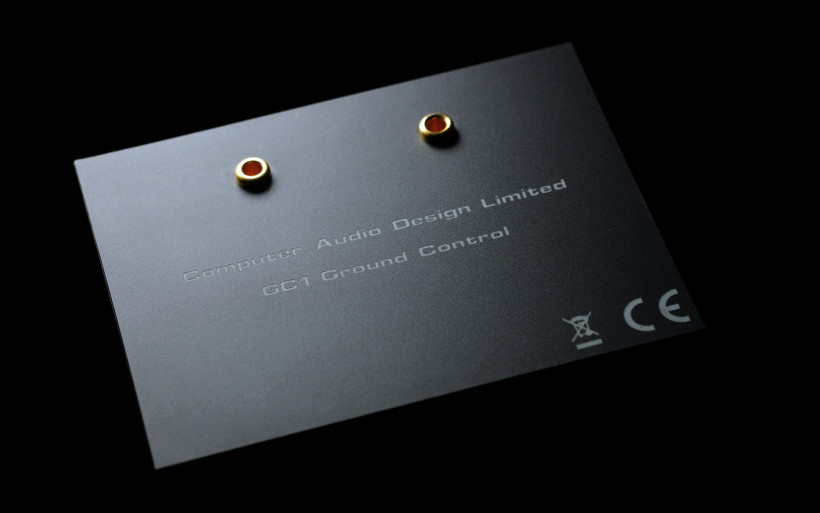 CAD’s passive grounding devices take about 10-minutes time to settle down and have their draining action engaged, this procedure doesn’t happen right away. The usual comparative order had to be reversed then; I had to connect Ground Controls to my setup first, then forget about them for a while, then listen critically, then unplug them, finally listen again and possibly grasp any audible shifts. During this assignment my main setup was constantly powered on even during overnight standby, of course for CADs to net more working time and it worked. The longer these boxes are connected, the more clear their input is. I can safely say as early as now that it’s surprisingly potent, but we’ll get to that bit in detail shortly.
CAD’s passive grounding devices take about 10-minutes time to settle down and have their draining action engaged, this procedure doesn’t happen right away. The usual comparative order had to be reversed then; I had to connect Ground Controls to my setup first, then forget about them for a while, then listen critically, then unplug them, finally listen again and possibly grasp any audible shifts. During this assignment my main setup was constantly powered on even during overnight standby, of course for CADs to net more working time and it worked. The longer these boxes are connected, the more clear their input is. I can safely say as early as now that it’s surprisingly potent, but we’ll get to that bit in detail shortly.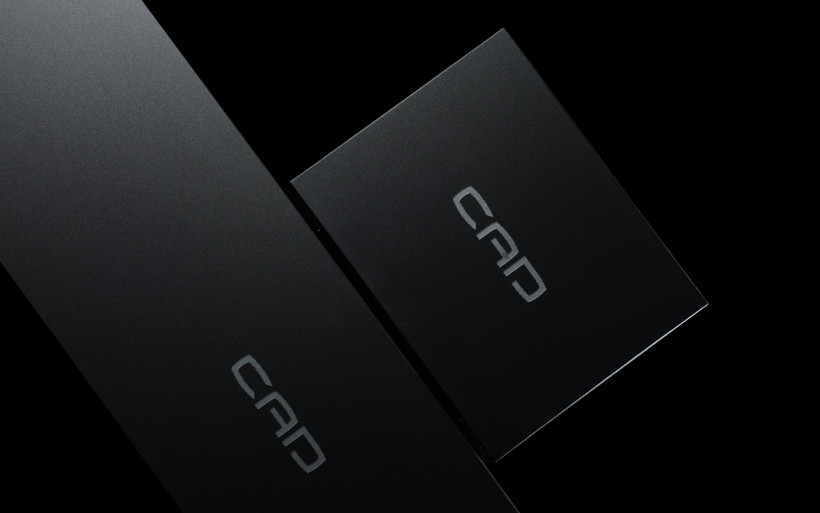 In order to stick to the one-box-per-component primary guide, the GC3 connected to the fidata and its smaller kin supported my DAC, that was the starting point. Past two days spent on casual on/off comparisons, both CADs switched places and their audible input was lesser. Not by much, but sensibly enough to acknowledge that the digital front of my platform wasn’t exactly the same. It sounded worse without both GC boxes connected, that was clear, but not quite as good as with the GC1/GC3 hooked to my Pacific/HFAS-S10U respectively. The GC1’s bulkier costlier brother not only did more for my fidata machine, but in effect also marked it as noisier than my DAC, at least that was my understanding of what happened past the exercise up above. With this knowledge, I knew exactly what to do next.
In order to stick to the one-box-per-component primary guide, the GC3 connected to the fidata and its smaller kin supported my DAC, that was the starting point. Past two days spent on casual on/off comparisons, both CADs switched places and their audible input was lesser. Not by much, but sensibly enough to acknowledge that the digital front of my platform wasn’t exactly the same. It sounded worse without both GC boxes connected, that was clear, but not quite as good as with the GC1/GC3 hooked to my Pacific/HFAS-S10U respectively. The GC1’s bulkier costlier brother not only did more for my fidata machine, but in effect also marked it as noisier than my DAC, at least that was my understanding of what happened past the exercise up above. With this knowledge, I knew exactly what to do next.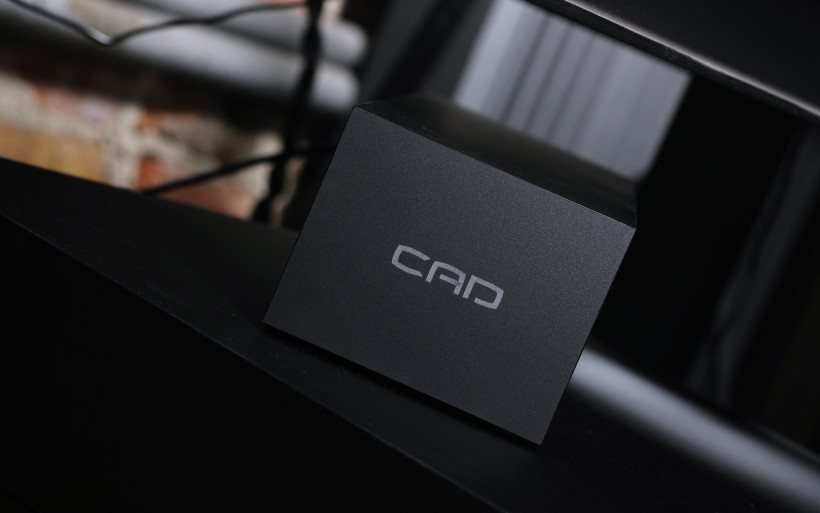 Both digital machines remained with their most fitting grounding boxes, this was a case closed for now. From there the obvious route included my fidata bonded with the GC3 now also married to one of my GigaWatt’s available outlets, just to see what happens. The listening routine hasn’t changed, 10-minutes long intervals were on as per usual. But most importantly, a single try of the GC3 on/off at the junction with my power conditioner was all it took to notice the difference. The HFAS-S10U clearly felt comfier in such a three-way; Scott’s box pushed its sonics in the already well-mapped direction, but audibly further enough to recognize the additional ground connection as the clear progress. However, my remaining hardware connected via any of CG boxes to my PC-3 SE EVO+ not only didn’t result in improvements, but my DAC’s sound got worse, which confirmed that signal earth and mains ground shouldn’t meet indeed. All experiments conducted thus far led to firm knowledge of what I could and couldn’t do with Scott’s products. From there the route was straightforward, only two tasks on my to-do list remained unchecked; I simply had to find the most potent use for today’s CADs in my setup and finally reveal their input.
Both digital machines remained with their most fitting grounding boxes, this was a case closed for now. From there the obvious route included my fidata bonded with the GC3 now also married to one of my GigaWatt’s available outlets, just to see what happens. The listening routine hasn’t changed, 10-minutes long intervals were on as per usual. But most importantly, a single try of the GC3 on/off at the junction with my power conditioner was all it took to notice the difference. The HFAS-S10U clearly felt comfier in such a three-way; Scott’s box pushed its sonics in the already well-mapped direction, but audibly further enough to recognize the additional ground connection as the clear progress. However, my remaining hardware connected via any of CG boxes to my PC-3 SE EVO+ not only didn’t result in improvements, but my DAC’s sound got worse, which confirmed that signal earth and mains ground shouldn’t meet indeed. All experiments conducted thus far led to firm knowledge of what I could and couldn’t do with Scott’s products. From there the route was straightforward, only two tasks on my to-do list remained unchecked; I simply had to find the most potent use for today’s CADs in my setup and finally reveal their input.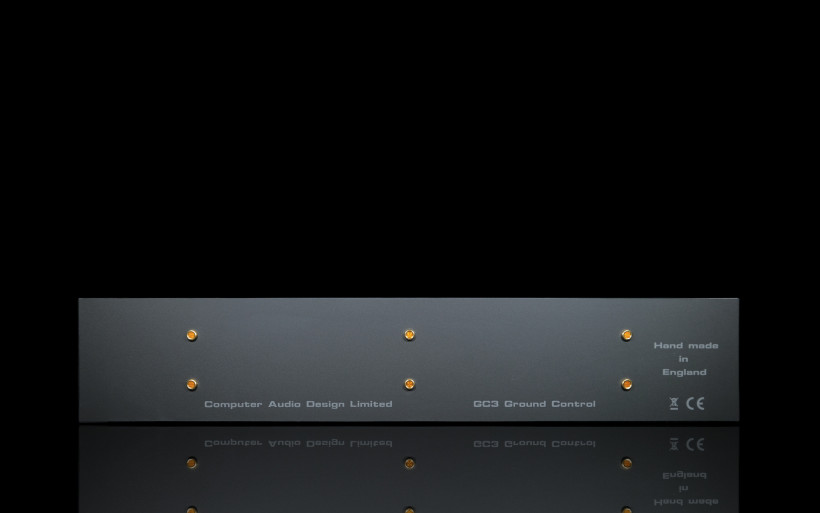 I could list numerous extra combinations I did to flesh out the best possible scenario, but at some point I acknowledged that there was more than one. For example, the GC1 connected to the Pacific plus the GC3 in-between my fidata deck and GigaWatt, all equaled on performance to my digital devices with the GC3 and the GC1 connected to the PC-3 SE EVO+. The same result I got after marrying the fidata and 925 to the GC3 and the Pacific to the GC1. To follow the guideline Isabel introduced me to, the GC3 in-between the fidata and the PC-3 SE EVO+ plus the GC1 connected to both my DAC and the 925 emerged as my optimal scenario. It might not be yours though, the grounding cleanup is not all black and white as it turns out. But most importantly, two CADs in my setup always did audibly more than just one already effective, their additive performance is the key takeaway.
I could list numerous extra combinations I did to flesh out the best possible scenario, but at some point I acknowledged that there was more than one. For example, the GC1 connected to the Pacific plus the GC3 in-between my fidata deck and GigaWatt, all equaled on performance to my digital devices with the GC3 and the GC1 connected to the PC-3 SE EVO+. The same result I got after marrying the fidata and 925 to the GC3 and the Pacific to the GC1. To follow the guideline Isabel introduced me to, the GC3 in-between the fidata and the PC-3 SE EVO+ plus the GC1 connected to both my DAC and the 925 emerged as my optimal scenario. It might not be yours though, the grounding cleanup is not all black and white as it turns out. But most importantly, two CADs in my setup always did audibly more than just one already effective, their additive performance is the key takeaway.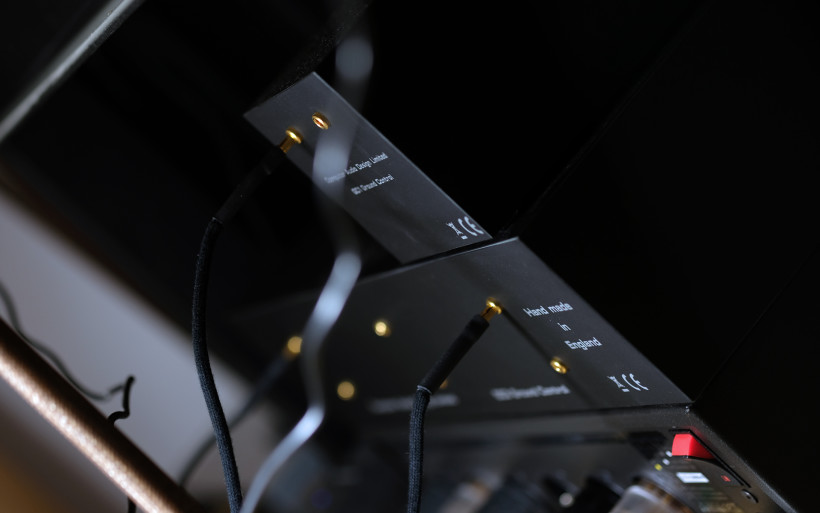 At this point it was high time to finally tackle the performance matter. Due to their noise removal service, CAD’s GC1 and GC3 models early on were viewed as components similar to accessories associated with power. Rightfully so as both quickly proved to perform the very same pleasantly familiar cleaning job. With just one in the chain, musical backdrop got darker, every virtual image displayed on it was outlined better thus less blurry, and also texturally not rounder/warmer but more moist instead, or pleasantly organic if you will. Put shortly, music sounded far more fluent, explicit and simply prettier with Scott’s grounding boxes on duty, and was also free from any tonal alterations. This input my ears have found inherently universal, my setup’s own voice didn’t factor in, it always remained faithful to its core profile. Everything served in more insightful very much unveiled fashion in my privy book is filed under the ‘clear progress with no downsides at all’ tab. Noise removal done right then? You betcha, but there’s still more to today’s CAD machines than this.
At this point it was high time to finally tackle the performance matter. Due to their noise removal service, CAD’s GC1 and GC3 models early on were viewed as components similar to accessories associated with power. Rightfully so as both quickly proved to perform the very same pleasantly familiar cleaning job. With just one in the chain, musical backdrop got darker, every virtual image displayed on it was outlined better thus less blurry, and also texturally not rounder/warmer but more moist instead, or pleasantly organic if you will. Put shortly, music sounded far more fluent, explicit and simply prettier with Scott’s grounding boxes on duty, and was also free from any tonal alterations. This input my ears have found inherently universal, my setup’s own voice didn’t factor in, it always remained faithful to its core profile. Everything served in more insightful very much unveiled fashion in my privy book is filed under the ‘clear progress with no downsides at all’ tab. Noise removal done right then? You betcha, but there’s still more to today’s CAD machines than this.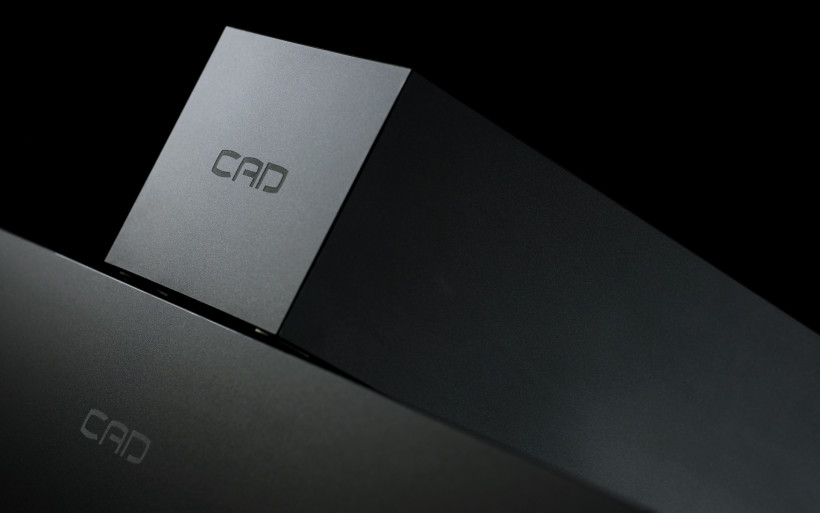 The “Creeper” track from Acid’s “Liminal” album starts with snappy pulses, joined after a while by low bass notes and the key male vocal line shortly after. Exceptionally direct and open Cube Audio Nenuphar floorstanders handled this song with ease just as they should, but its quick introductory bursts were noticeably tighter and faster with both CADs engaged. Downstairs notes in this record were subjected to the same therapy to become more agile, a bit shorter and all in all grasped tighter, yet without any extension lost. A bit later in the same track, massive hand-clapping alike effects kick in. These are immediate, anything but subtle and at high SPL capable of proper scares to those unfamiliar with the song. This part both grounding boxes morphed into something even more violent, shorter, wilder and impressive, but as smooth as it ever was.
The “Creeper” track from Acid’s “Liminal” album starts with snappy pulses, joined after a while by low bass notes and the key male vocal line shortly after. Exceptionally direct and open Cube Audio Nenuphar floorstanders handled this song with ease just as they should, but its quick introductory bursts were noticeably tighter and faster with both CADs engaged. Downstairs notes in this record were subjected to the same therapy to become more agile, a bit shorter and all in all grasped tighter, yet without any extension lost. A bit later in the same track, massive hand-clapping alike effects kick in. These are immediate, anything but subtle and at high SPL capable of proper scares to those unfamiliar with the song. This part both grounding boxes morphed into something even more violent, shorter, wilder and impressive, but as smooth as it ever was.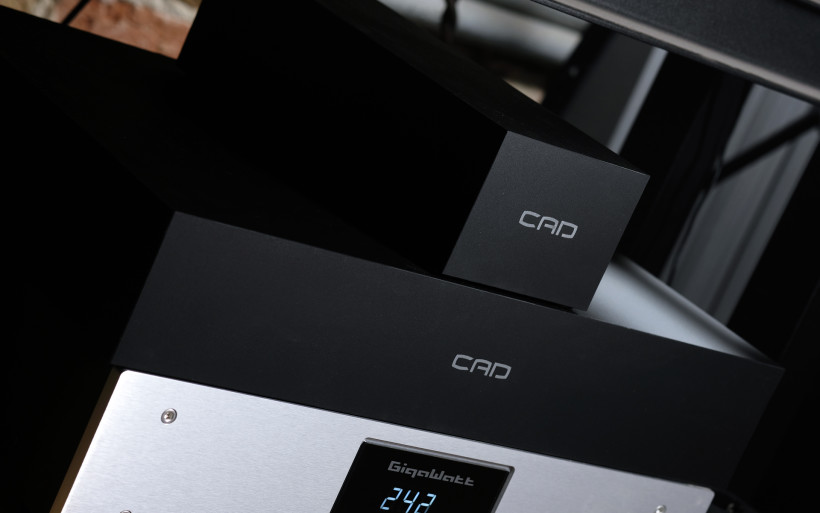 Then I moved to yet another snappy though soundstage wise even grander song, “Inchworm” by Battles. The same story happened again with the GC1 and GC3 on duty; every agile content on this track sounded tighter and was presented in more resolving way, but the sensation of more air being pushed into my room was there as well. Rodrigo y Gabriela’s live take on “Orion” originally made by Metallica confirmed my findings, but now with unamplified acoustic guitars. These instruments had more momentum, decayed longer, each audible string pluck they had more sonorous, more information about their boxes was provided and the effect was substantially more exciting. The two CADs unplugged led to this song far slower, veiled and less clear. This exact shift I was easily able to replicate with KODO’s “Psychopomp”, “Mud” by Peaches, Hecq’s “Steeltongued”, “Walk This Way” by Aerosmith and a ton of other residents on my playlist. The difference was as clear as the timing related pattern itself, which in time emerged as today’s very much unexpected key twist.
Then I moved to yet another snappy though soundstage wise even grander song, “Inchworm” by Battles. The same story happened again with the GC1 and GC3 on duty; every agile content on this track sounded tighter and was presented in more resolving way, but the sensation of more air being pushed into my room was there as well. Rodrigo y Gabriela’s live take on “Orion” originally made by Metallica confirmed my findings, but now with unamplified acoustic guitars. These instruments had more momentum, decayed longer, each audible string pluck they had more sonorous, more information about their boxes was provided and the effect was substantially more exciting. The two CADs unplugged led to this song far slower, veiled and less clear. This exact shift I was easily able to replicate with KODO’s “Psychopomp”, “Mud” by Peaches, Hecq’s “Steeltongued”, “Walk This Way” by Aerosmith and a ton of other residents on my playlist. The difference was as clear as the timing related pattern itself, which in time emerged as today’s very much unexpected key twist.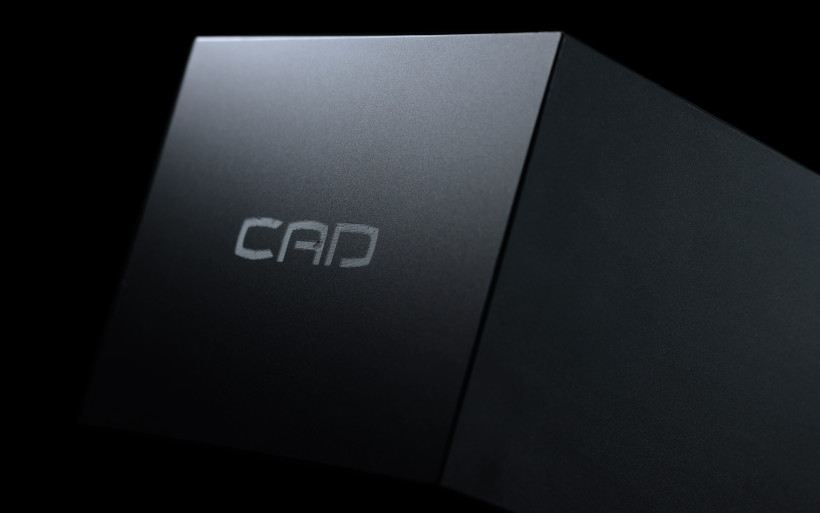 CAD GC1 and GC3’s performance always resulted in speedier, more clear and in effect accurate outcome, but also a bit slimmer. Early on I viewed this as a mild liposuction procedure, but in the long run this wasn’t the case. As per usual, one has to adjust to accessories such as today’s, otherwise their work might not be fully understood. After several days, my setup’s performance with CADs turned from bluntly slimmer to free from excessive chunk, more open and more clear in the process. Textural layers in check, even more spatial grandeur, elevated accuracy, finer outlines, more onstage breath and movement plus increased dynamic range all happily followed. If there was any sonic shortcoming to the CAD therapy, I couldn’t hear it.
CAD GC1 and GC3’s performance always resulted in speedier, more clear and in effect accurate outcome, but also a bit slimmer. Early on I viewed this as a mild liposuction procedure, but in the long run this wasn’t the case. As per usual, one has to adjust to accessories such as today’s, otherwise their work might not be fully understood. After several days, my setup’s performance with CADs turned from bluntly slimmer to free from excessive chunk, more open and more clear in the process. Textural layers in check, even more spatial grandeur, elevated accuracy, finer outlines, more onstage breath and movement plus increased dynamic range all happily followed. If there was any sonic shortcoming to the CAD therapy, I couldn’t hear it.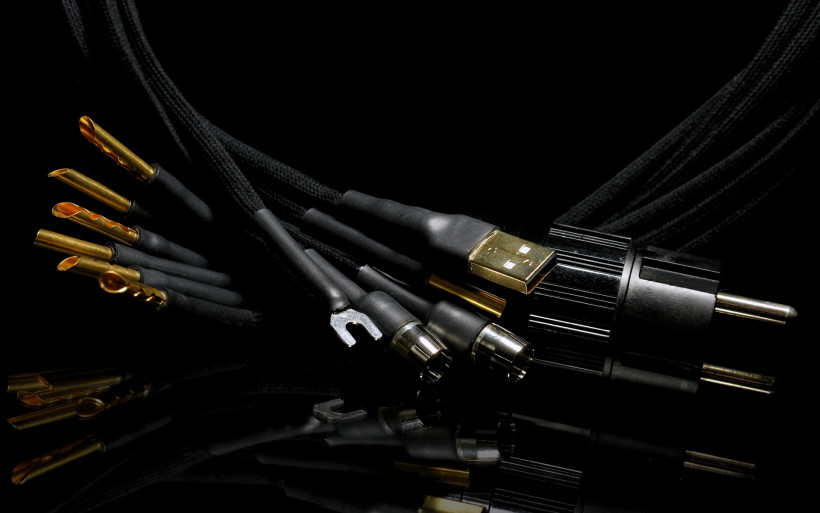 And lastly, both Ground Control models behaved in the same way with all used hardware, whereas the key difference between them narrowed down to their efficiency. The costlier GC3 simply did audibly more of the same thing plus it could accommodate three times as many components versus its smaller kin. That’s why the alike voiced albeit less potent latter I view as a good starting point for enthusiasts who’d like to get familiar with passive grounding treatment, yet avoid major financial commitments early on.
And lastly, both Ground Control models behaved in the same way with all used hardware, whereas the key difference between them narrowed down to their efficiency. The costlier GC3 simply did audibly more of the same thing plus it could accommodate three times as many components versus its smaller kin. That’s why the alike voiced albeit less potent latter I view as a good starting point for enthusiasts who’d like to get familiar with passive grounding treatment, yet avoid major financial commitments early on.
Summary
Due to lack of any previous experience with goods such as CAD’s grounding sorters, these two yours truly mapped as nebulous early on, if not a bit suspicious. Their ask implied some action, but how today’s GC1 and GC3 models executed their job was quite unexpected. That’s why full awareness of grounding treatment just as meaningful as any other noise-killing measure, became the most valuable lesson of them all for me.
Scott Berry’s GC1 and GC3 Ground Control products are nicely put together very minimalist lookers. Their goal is to just sit wherever there’s enough space, do their cleaning duty in complete silence and that’s it. Not a single LED in case of these passive affairs is just the way it should be. On ease of use and connective versatility both items score high, whereas the ability to daisy-chain multiple in order to scale performance and thus cleverly avoid obsolescence is smart policy as well. However, the key question to ask is about one’s willingness to address the grounding matter or not.
Financially capable individuals already well sorted, who still want to push their setups further and avoid sonic trade-offs along the road, are today’s target group. CAD GC1 and GC3 Ground Control models unlock this exact path. Put shortly, these items partake in revealing what hardware they’re connected to is capable of, thus they behave quite similarly to power components yet further spice things up via their pleasantly speedy twist. But most importantly, the noise-killing fight in general has no downsides; it’s inherently universal, very much additive and the only difference is in types of battlefields where it’s performed. If power components, cables, mechanical decoupling and alike are already cases closed yet funds allow to press on, why not to take this combat to the not exactly popular yet as equally valid ground plane next? If so, CAD will help you to decisively win this one as well, simple as that. ‘Till next time!
Associated Equipment:
- Amplifier: Trilogy 925
- DAC: LampizatOr Pacific (KR Audio T-100 / Living Voice 300B + KR Audio 5U4G Ltd. Ed.)
- Speakers: Cube Audio Nenuphar
- Transport: fidata HFAS-S10U
- Speaker cables: Boenicke Audio S3, LessLoss C-MARC
- Interconnects: Audiomica Laboratory Erys Excellence
- Power components: Gigawatt LC-3 EVO -> PC-3 SE EVO+, Gigawatt PF-2 + Gigawatt LC-2 MK2 + Forza AudioWorks Noir Concept/Audiomica Laboratory Ness Excellence/LessLoss C-MARC
- Rack: Franc Audio Accesories Wood Block Rack
- Music: NativeDSD
Retail prices of reviewed components in EU (incl. 22% VAT):
- CAD GC1 Ground Control: €2’000
- CAD GC3 Ground Control: €4’750
- CAD Ground Control Cable: €350
Manufacturer: Computer Audio Design








